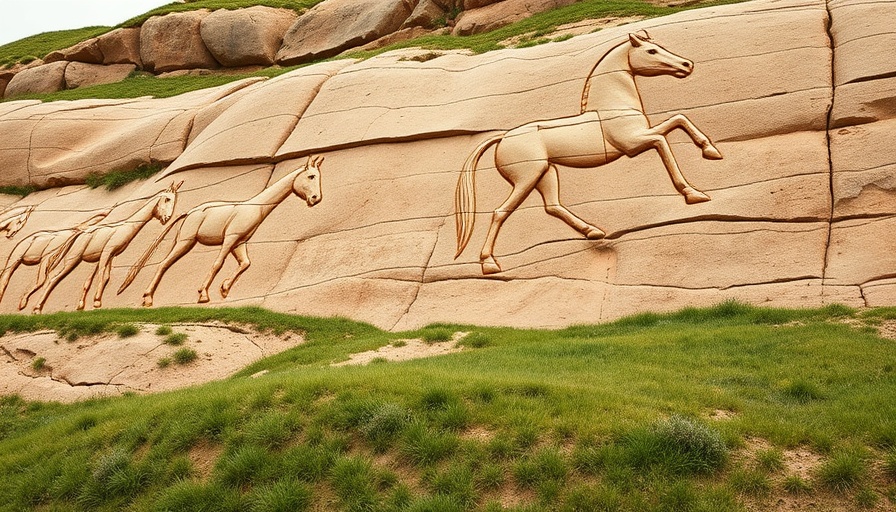
The Mysterious Journey of Robin Hood and His White Horse
Ahoy, young history enthusiasts! Today, we're diving into an exciting tale involving Robin Hood—a legendary hero known for his cleverness and acts of resistance against injustice. In the recent video, Robin Hood's White Horse Problem, we learn about his adventures and a puzzling detail connected to a famous landmark—the White Horse.
In Robin Hood's White Horse Problem, the discussion dives into the legendary adventure of Robin Hood, exploring key insights that sparked deeper analysis on our end.
As Robin Hood and his loyal group of merry men travel south, they embark on a critical mission: to join King John’s army to face invaders. They ride towards a location known as The White Horse. But, what does this mean? Well, White Horse Hill in Oxfordshire features a massive chalk figure carved into the hillside that is said to be about 3,000 years old!
However, as the video reveals, the White Horse Robin and his companions pass by doesn't seem to match this ancient geoglyph at all! It’s surprising, isn’t it? It makes us wonder—was the location referred to simply a different 'White Horse,' or do we have an artistic blunder in the telling of this tale?
The Enigmatic White Horse: What’s in a Name?
The geoglyph on White Horse Hill is undoubtedly impressive, but there are many other carved horses scattered across England. The video notes that the oldest carvings date back to the Bronze Age, leaving us puzzled about which horse Robin Hood actually had in mind. Some of the more modern carvings appeared much later, after King John’s time, potentially skewing our historical understanding.
So, if the Offington White Horse isn’t the one Robin was using as a landmark, could it suggest that folklore often takes creative liberties? Fascinatingly, it might hint at how history can sometimes blend with myth. Each generation adds their spin to stories like Robin Hood's, shaping our perception of the past.
A Parallel Example: Myths in Our Own History
Much like the elusive White Horse, many myths and tales permeate our history, highlighting cultural heroic figures. Take Sir Lancelot, for example. While often associated with King Arthur's legend, the details about his existence and feats can vary widely across folklore. Just like Robin Hood, Lancelot serves as a reflection of the values, challenges, and triumphs of the time, reminding us that these characters resonate with unique cultural narratives.
What We Can Learn From Robin's Journey
So, what insights can we gather from Robin Hood’s mission to the White Horse? First, it teaches us to discern fact from fiction. While stories like Robin Hood’s are thrilling, they often come painted in a mix of history and creativity. This adventure also allows discussions about resilience, as Robin stands against a powerful regime to protect the needy.
Understanding the evolution of these stories gives us a glimpse into the society that birthed them. They often echo real struggles, weaving in lessons that remain relevant even today.
The Call to Action: Embracing Stories of Resilience
For more insights into stories like Robin Hood's and how they shape our understanding of history, check out my latest book, Call of the Blackbird. Join me on this journey of discovery and resilience through thrilling narratives that highlight our shared human experience! Visit NancyPolkHall.com for more information.
Conclusion: Our Heroes, Past and Present
In exploring Robin Hood’s tale and the mystery of the White Horse, we recognize not only the fun of storytelling but also the lessons steeped in resistance and perseverance. Whether it’s deciphering the truth behind historical landmarks or understanding the enduring nature of legends, these tales continue to captivate and inspire us across the ages. Let’s keep curious minds alive and dive deeper into our history!
 Add Row
Add Row  Add
Add 




 Add Row
Add Row  Add
Add 

Write A Comment